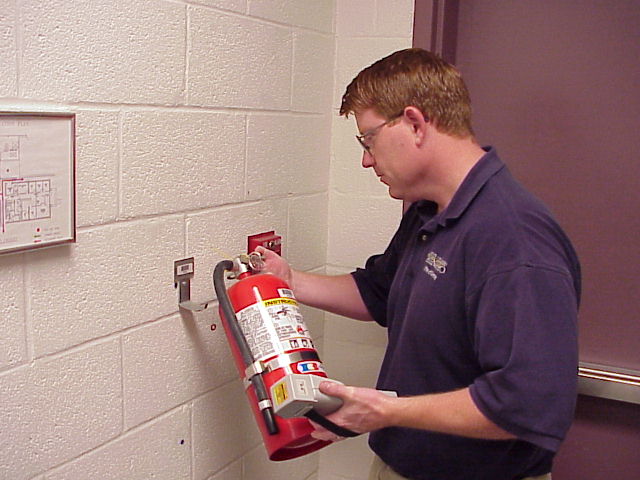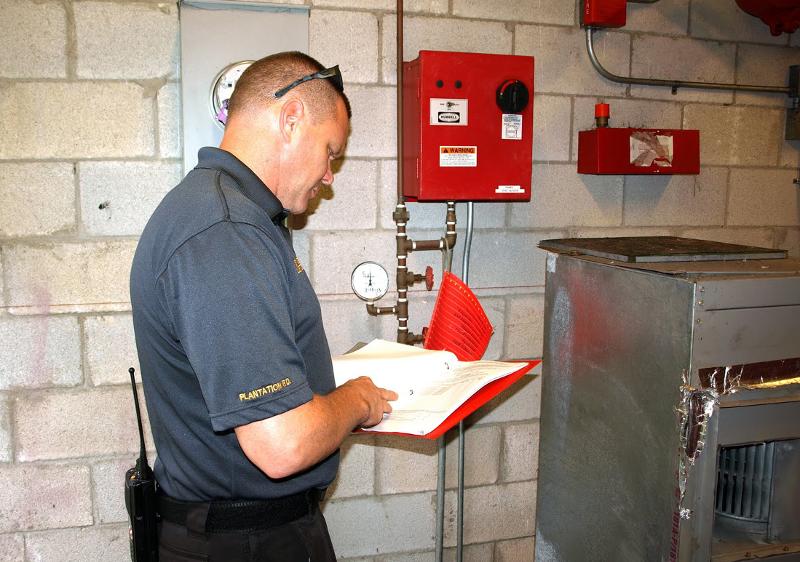
A Detailed Look at Fire Extinguishers
Each year, fires brought on by cooking, arson, electrical faults, and lightning cause deaths and accidents to humans in addition to damage to property. Because of this, city governments across the US demand public buildings and facilities to own firefighting equipment, such as fire extinguishers.
Kinds of Fire Extinguishers
1. Class A extinguishers
Class A extinguishers are utilized to put out flames fueled by ordinary combustible materials like paper, fabric, wood, and also most plastics. Extinguishers in this class rely on atmosphere pressurized water to put fires out.
2. Class B extinguishers
Fires due to flammable liquids like gasoline, paint, oil, solvents, and spyware demand course B extinguishers. The principal ingredients used to suppress fires within this class are non-flammable gases such as carbon dioxide (CO2). It is not a good idea to use water to extinguish fire brought on by a flammable liquid.
3. Class C extinguishers
A course C extinguisher may be used to put out fires brought on by electric equipment/gear such as faulty circuit breakers, faulty wiring, fuse boxes, energized electrical components, and faulty electricity sockets. Since such fires have elevated danger of electrocution, water-based extinguishers shouldn't be used.
4. Class D extinguishers
Class D extinguisher combat fires fueled by sterile metallic powders, shavings, and scents. This description matches chemicals found in several labs like magnesium, potassium, titanium, and sodium.
5. Class K extinguishers
In other words fires which involve combustible cooking fluids such as oils and fats, utilize a course K extinguisher. Since a number of the compound agents/compounds utilized to curb kitchen fires are electrically conductive, turn off electricity outlets. The active agent in this kind of fire extinguisher works by interfering with the chemical reactions that enable fires to keep burning. To use a portable fire extinguisher, target its nozzle in the origin of flame and press on the manage to neutralize compressed agent.
The Importance of Having Fire Extinguishers
To begin with, fire extinguishers can save lives whether residential or business building occupants place and extinguish a fire during its early phases. Data in the National Fire Protection Association (NFPA) shows that flames in non-residential buildings caused 70 civilian deaths in 2013.
One more advantage of installing extinguishers would be to stop fire-related injuries. USFA statistics demonstrate that the federal fire injury rate stands 56.2 individuals per one million Americans.
A third advantage is avoidance of property damage. NFPA statistics proves that fires caused non-residential property damage worth $2.6 billion in 2013. Thus, the NFPA urges every residential construction floor to have a single fire extinguisher installed.
Additionally, each extinguisher ought to be set up close to a door or emergency exit stage. Residential building places that fulfill this need include front and back doors since they have a tendency to be conveniently located and readily reachable.
The Importance Of Regular Fire Extinguisher Inspection
As with any other piece of mechanical equipment, extinguishers are vulnerable to failure. Because of this, it is sensible to have them inspected regularly by a qualified practitioner once each month. The review procedure should include:
• Confirming the extinguisher is observable and accessible
• Confirming the tamper seal is unbroken and the locking pin is undamaged
• Looking for signs of physical damage such as scratches, leakage, or corrosion/rust about the outside shell of this extinguisher
• Checking the strain index and confirming it is in great working condition.
Fire Extinguisher Servicing
Apart from review, fire extinguishers need routine servicing by qualified people. Including:
• Hydrostatic testing with a non-compressible fluid
• Recharging According to review recommendations, or when the extinguisher requires topping up following usage
• Replacement of faulty components That Don't function as anticipated
Code Compliance
Portable fire extinguishers installed or sold in buildings in the US have to comply with the NFPA 10 standard. This standard is included of guidelines on choice Fdny fire extinguisher inspection, installation, maintenance, review, and hydrostatic testing of extinguishers.
NFPA 10 also includes tips on training and education of men and women that are very likely to take care of fire extinguishers in the case of an emergency. Additionally, it features an inventory of obsolete fire extinguishers which shouldn't be used.

Maintaining Building Safety Through Proper Fire Door Inspection
Doors which are resistant to fire could also suffer breakdown as a consequence of continuous usage. There's not any other good choice but to run the ideal fire door review. To get the help of a door builder for all these distinctive doorways is an essential rule. This is done in order to make sure that doors will operate properly in case of a fire crisis.
A fire door builder owns the capacity to perform minor repairs and part adjustments to doors to be able to make them pass the compliant position. They're consider the sole the certified tradesman that can do this checking on fire doors.
A main component of any fire collection is known as the door frame. This is a important component that should be installed correctly. Additionally, all fire door frames have to be kept based on the criteria and have to be exposed via a certified review.
Why should doors be granted regular check up? They could fail when used greatly. A few of those doors are set in high traffic areas that are subject to regular openings every day. A few of those doors are located in hospitals. Whether there are 100 openings made to your doorway daily, it might need not just a annual inspection but at least every 3 weeks. This would guarantee there aren't any loose parts and the gap of the doorway from the ground remains in the allowed limitation that is kept at particular dimensions.
There should be sufficient space supplied in the bottom edge of the door in addition to in the top so that smoke could be stop from seeping through those openings. Even cold smoke is regarded as a hazard because inhalation of any sort of smoke might be poisonous to your system. Therefore, the installation of smoke seals is needed for additional protective measures.
On the flip side, each and every fire door must consist of intumescent seals. These are sealing substances that are put round the doorway. In the event of exposure to flame, this sealing material will expand and will tighten the doorway so that smoke and fire would be unable to pass under prescribed time constraints.
Some providers of those doors will also be given the ability to run fire door review. This usually means they've been licensed to provide such solutions apart from providing authentic doors which can withstand fire. This can be additional advantage given to customers as they don't need to employ a different organization or search for men and women who are able to give them testimonials which would be respected by government agencies. There might also be an app that a building operator can subscribe to so as to acquire the services for routine inspections of these doorways.